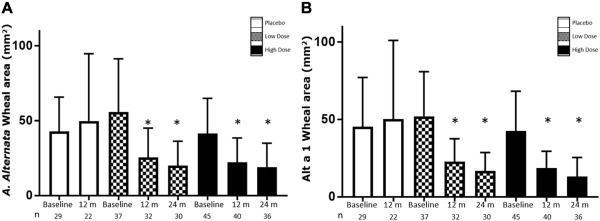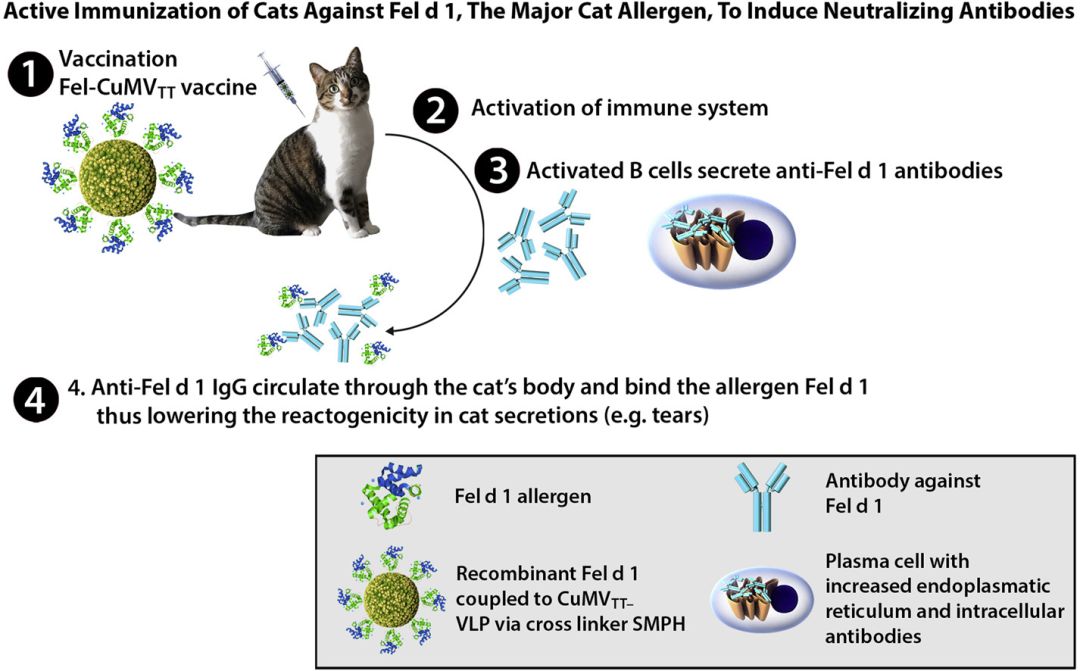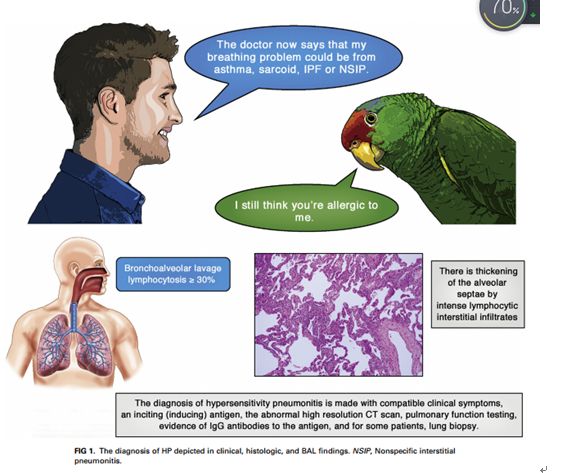-
2019.08.09
Atopic dermatitis (AD), food allergy, allergic rhinitis, and asthma are common atopic disorders of complex etiology. The frequently observed atopic march from early AD to asthma, allergic rhinitis, or both later in life and the extensive comorbidity of atopic disorders suggest common causal mechanisms in addition to distinct ones. Indeed, both disease-specific and shared genomic regions exist for atopic disorders. Their prevalence also varies among races; for example, AD and asthma have a higher prevalence in African Americans when compared with European Americans. READ MORE
READ MORE -
2019.08.09
The evolution of the IgE response to the numerous allergen molecules of Dermatophagoides pteronyssinus is still unknown. READ MORE
READ MORE -
2019.07.31
Cockroach is one of the most important sources of indoor allergens that can lead to IgE sensitization and to the development of rhinitis and asthma. READ MORE
READ MORE -
2019.07.31
RATIONALE: To determine the agreement between ImmunoCAP cow's milk-specific IgE measurements and IgE antibody responses to individual allergic milk protein components. READ MORE
READ MORE -
2019.07.31
Background: Macrophages can be converted in vitro into immunoregulatory M2b macrophages in the presence of immune complexes (ICs), but the role of the specific subclasses IgG1 or IgG4 in this phenotypic and functional change is not known. READ MORE
READ MORE -
2019.06.26
Weather and climate change are constant and ever-changing processes that affect allergy and asthma. The purpose of this report is to provide information since the last climate change review with a focus on asthmatic disease. PubMed and Internet searches for topics included climate and weather change, air pollution, particulates, greenhouse gasses, traffic, insect habitat, and mitigation in addition to references contributed by the individual authors. READ MORE
READ MORE -
2019.06.26
RATIONALE: Birch pollen allergy with the single major allergen Bet v 1 is a paradigm to study the molecular interplay of IgE and IgG1 or IgG4 in sensitization and allergen immunotherapy. However, there is a lack in the availability of such antibodies. We here aimed to fuel our antibody PIPEline by using Polymerase Incomplete Primer Extension (PIPE) cloning (Ilieva et al., 2017), the latest method for fast creation of different classes of antibodies sharing the same variable region. READ MORE
READ MORE -
2019.06.26
The major timothy grass pollen allergen Phl p 5 belongs to the most potent allergens involved in hay fever and asthma. READ MORE
READ MORE -
2019.06.26
Methods: This nationwide Swedish cohort study of 1,086,378 children born in Sweden in 2001-2012 used prospectively recorded data from health care registers. Using Cox regression,we estimated hazard ratios (HRs) with 95% CIs for the association between perinatal characteristics (eg, cesarean delivery and preterm birth) and food allergy as defined by diagnoses in the National Patient Register, adjusting for infant sex and maternal factors (age at delivery, country of birth, parity, smoking, body mass index, and asthma/pulmonary disease). READ MORE
READ MORE -
2019.06.06
Allergic and nonallergic asthma severity in children can be affected by microbial exposures. READ MORE
READ MORE -
2019.06.06
Dynamic establishment of the nasal microbiota in early life influences local mucosal immune responses and susceptibility to childhood respiratory disorders. READ MORE
READ MORE -
2019.06.06
House dust mites (HDM) are a predominant source of inhalant allergens that attribute to over 50% of worldwide allergy cases, while the full spectrum of HDM allergens remains unknown. Here we sequenced a high-quality genome of Dermatophagoides (D.) pteronyssinus to find known canonical allergens and allergen orthologs inferred from D. farinae genome. READ MORE
READ MORE -
2019.06.06
Chronic rhinosinusitis with nasal polyps (CRSwNP) is often characterized by local production of polyclonal IgE idiotypes. Although tissue IgE concentrations can be in the range of several thousand kilounits per liter, the regulatory mechanisms by which IgE-mediated inflammation is controlled in patients with nasal polyps are not well understood. READ MORE
READ MORE -
2019.05.17
Allergen-specific IgG4 increases during allergen specific immunotherapy (AIT). In this study, specific IgG4 against the individual major allergens of dust mites during AIT was investigated. READ MORE
READ MORE -
2019.05.17
There have been few studies conducted on the efficacy and safety of specific immunotherapy with allergen extracts of fungi compared with other allergen extracts, and there are no data on the major allergen Alt a 1 of the fungus Alternaria alternata. READ MORE
READ MORE -
2019.05.17
Cat allergy in human subjects is usually caused by the major cat allergen Fel d 1 and is found in approximately 10% of the Western population. Currently, there is no efficient and safe therapy for cat allergy available. Allergic patients usually try to avoid cats or treat their allergy symptoms. READ MORE
READ MORE -
2019.05.17
Allergen-specific IgE measurements and the clinical history are the cornerstones of allergy diagnosis. During the past decades, both characterization and standardization of allergen extracts and assay technology have improved. Here we discuss the uses, advantages, misinterpretations, and limitations of ImmunoCAP IgE assays (Thermo Fisher Scientific/Phadia, Uppsala, Sweden) in the field of allergology. READ MORE
READ MORE -
2019.04.30
Hypersensitivity pneumonitis (HP) is a TH1 lymphocyte–biased fibrosing alveolitis caused by antigens ranging from avian excreta, fungi, thermophilic bacteria, and protozoa to reactive chemicals found in the workplace. Mimicking a viral syndrome, acute exposures to inciting antigens cause abrupt onset of nonproductive cough, dyspnea, and chills with arthralgias or malaise usually from 4 to 8 hours later so that the temporal relationship between antigen exposure and symptoms might be unsuspected. The histology of HP reveals prominent lymphocyte infiltrates that thicken the alveolar septa with poorly formed granulomas or giant cells. READ MORE
READ MORE -
2019.04.30
Allergen-specific immunotherapy (AIT) is a clinically and cost-effective allergy treatment that modifies the course of the disease and has long-lasting effects.1x1Cox, L., Calderón, M., and Pfaar, O. Subcutaneous allergen immunotherapy for allergic disease: examining efficacy, safety and cost-effectiveness of current and novel formulations. Immunotherapy. 2012; 4: 601–616 READ MORE
READ MORE -
2019.04.30
Type I allergic reactions to plant-derived food: A consequence of primary sensitization to pollen allergens https://doi.org/10.1016/S0091-6749(96)80062-5 Patients with pollen allergy also frequently experience allergic symptoms on ingestion of plantderived foods (fruits, vegetables, and spices). 1-3 The association of certain pollen allergies with food intolerance has led to the definition of clinical syndromes such as the celery-mugwort-birch pollen syndrome, the apple-birch pollen syndrome,and similar phenomena. More than 10 years ago, it was suggested that IgE antibodies that cross-react with pollen and food proteins could be responsible for the observed clinical phenomena. READ MORE
READ MORE
MK手机投注 | 安博·体育(中国)有限公司-官网 | 乐动官方网站 | 星空手机版 | 星空手机版 | mk体育(MKsports集团)股份公司 | 安博手机网页版登录入口 | 华体平台 | 千亿体育官网在线登录入口中国有限公司 |
 华亿体育(中国)游戏平台
华亿体育(中国)游戏平台
